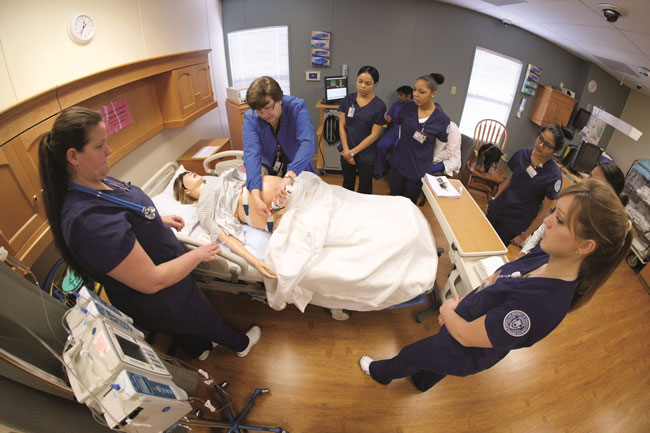911
Training Virtually
Video connection lets UT Arlington nursing professors improve emergency medicine

The Smart Hospital's electronic patients are used in the simulations.
A nurse practitioner is called to the delivery room to help with an emergency: Due to a complication during delivery, a mother and her baby are rapidly losing blood. The newborn is pale, limp, and not breathing. Swift and confident actions are needed.
To help health care professionals better prepare for such high-stress situations, UT Arlington has teamed with Pediatrix Medical Group to test new simulation technology. The project allows clinicians in the field to be put through the paces of an actual emergency using a mobile, high-fidelity simulator—or electronic patient—in UT Arlington’s Smart Hospital via a video link.
The initiative is especially useful for situations where nurses and doctors don’t have a lot of opportunity to practice a procedure.
“It is critical for us to measure and validate the competency of clinicians in high-risk, low-volume procedures,” says Debra Sansoucie, vice president of the advance practitioner program at Pediatrix, a private company that provides staff for hospitals and clinics. “If we can utilize the expertise and leadership of the team at UT Arlington to train in credible, valuable scenarios with their very own teams and in their own environment, we can not only offer an advantage to our patients, but also to our hospital partners.”
Judy LeFlore, associate dean in the College of Nursing and Health Innovation, has managed more than a dozen live sessions with clinics and hospitals in Florida, Tennessee, and Texas.
“The health care workers love it,” she says. “They ask for more training because the more practice in high-risk situations they get, the better the outcomes.”

















